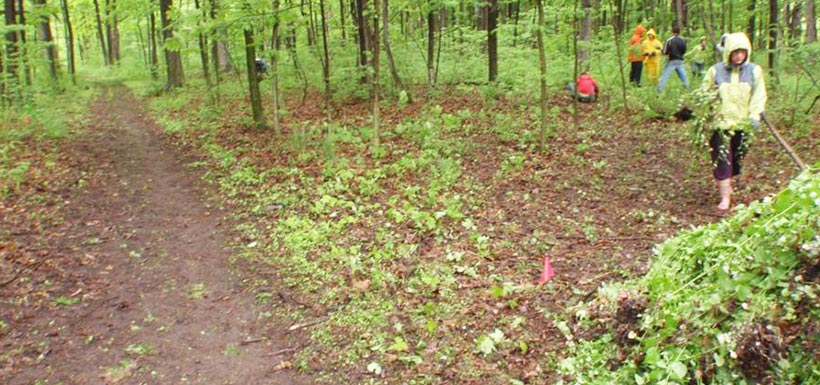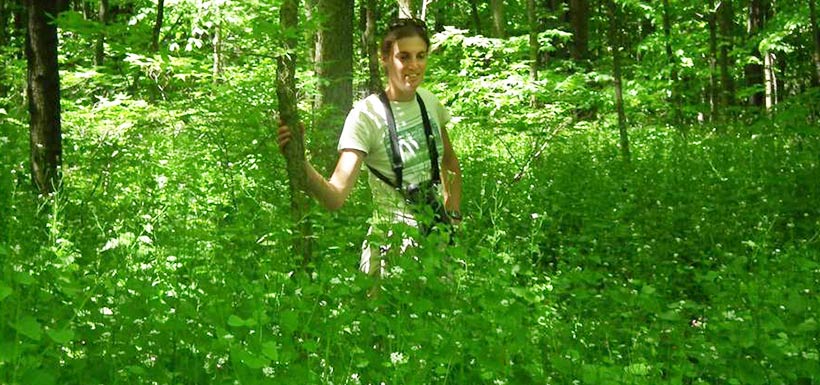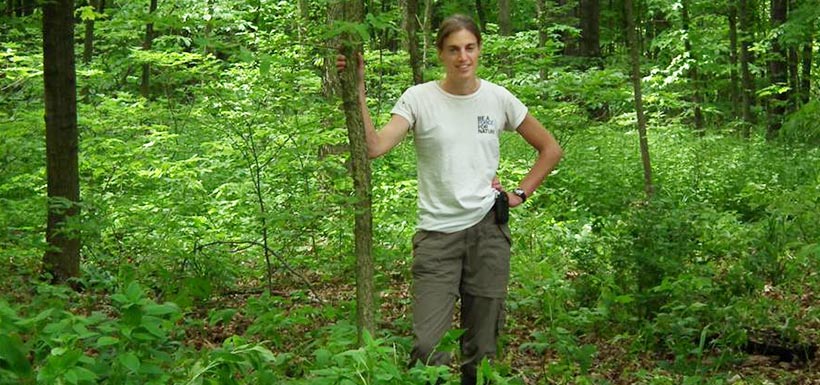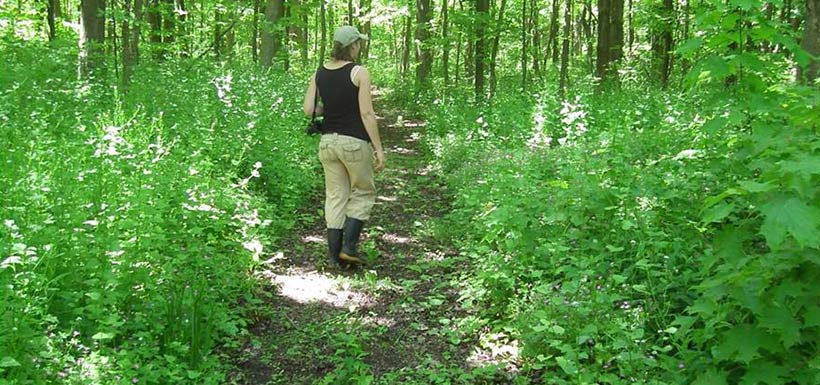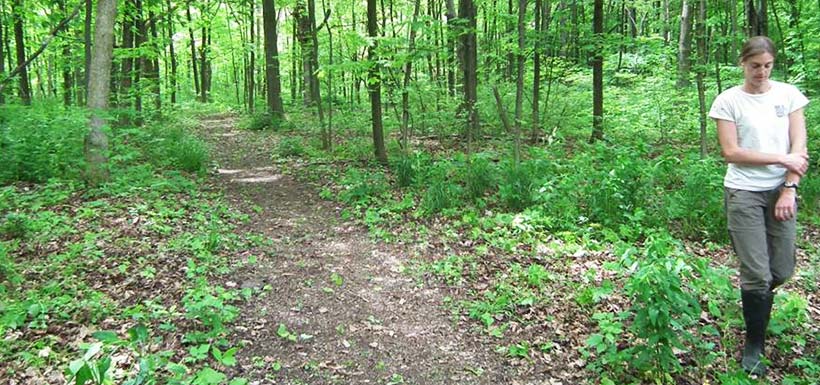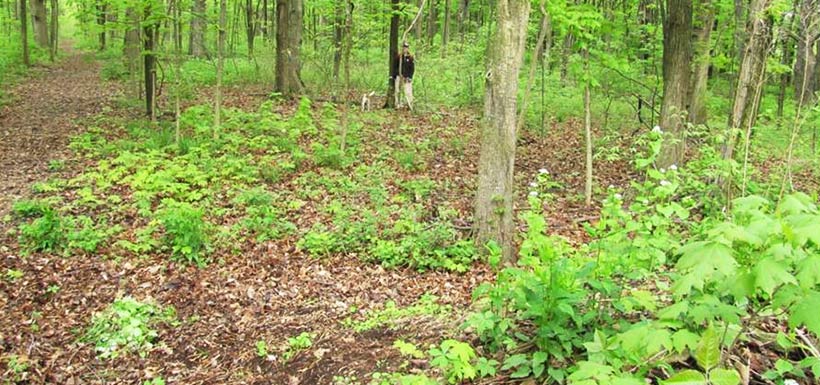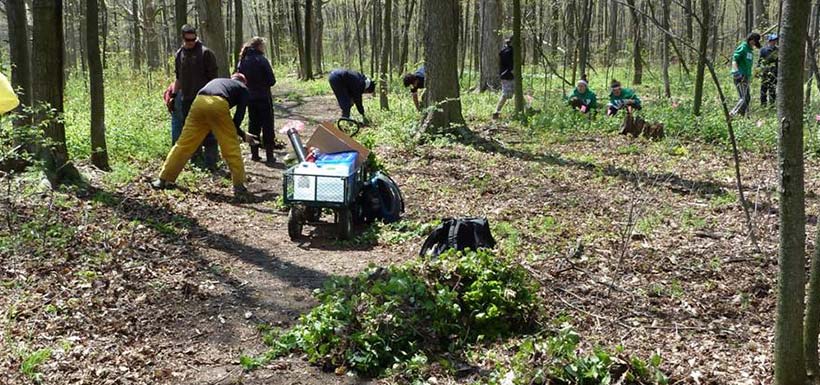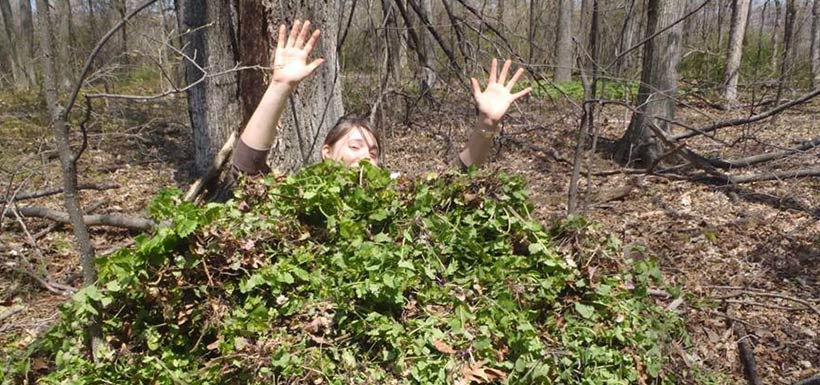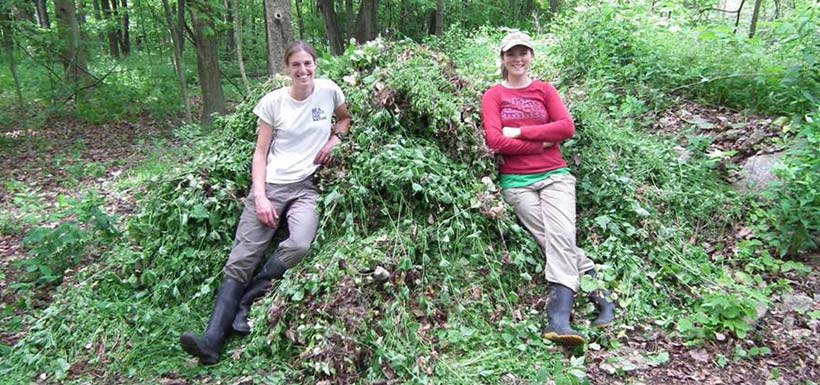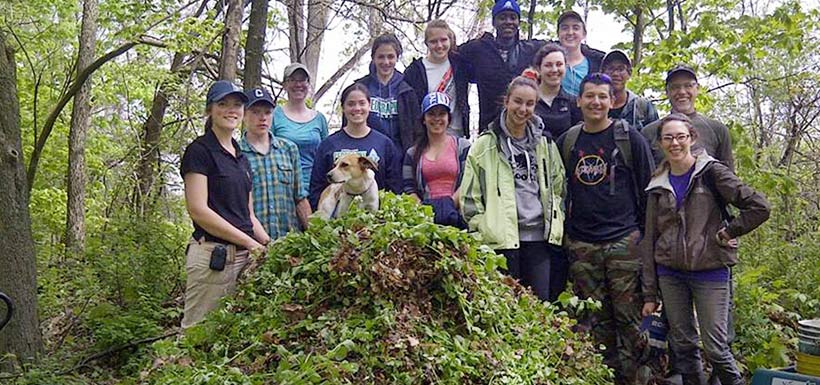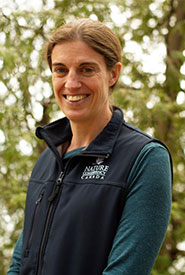Fighting the good fight: getting rid of garlic mustard
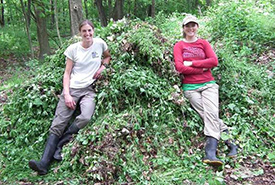
NCC staff tackle invasive garlic mustard (photo by NCC)
Spring on Pelee Island for Nature Conservancy of Canada (NCC) staff Mhairi McFarlane and Jill Crosthwaite is a bittersweet time, because although the wildflowers are emerging and birds are returning, so too is a nasty invasive plant: garlic mustard (alliaria petiolata).
This plant was introduced by humans from Europe, and outcompetes our native wildflowers such as trillium and bloodroot. It can even interfere with the germination of seeds, and could therefore change forest composition over time.
As a typical non-native invasive species it lacks predators, diseases and competitors, and therefore spreads uncontrollably and can take over the forest floor quite rapidly.
NCC uses a variety of approaches to controlling this species. In the very early spring, before native plants have emerged from deep under the leaf litter, garlic mustard is already growing and can be carefully sprayed with a dilute herbicide. This is very effective, and means that the soil remains undisturbed. A little later in the season, as soon as the native plants start to emerge, we change our approach to hand pulling. Although this causes some soil disturbance, we do not want to use herbicides amongst the native plants. Hand pulling is quite effective, as long as you keep revisiting the same spot year after year. The plants you see are not alone: often, there are many garlic mustard seeds in the soil which will germinate once you have pulled the adult plants.
On Pelee Island, we have been very lucky to partner with the Environmental Leadership Program at Catholic Central High School in London. Van Lieshout brings his class out to the island in the same week every year, and has generously provided many keen hands to pull garlic mustard on our Richard and Beryl Ivey property. We have had 10 to 20 people pulling garlic mustard in the same area for the last five years. After three years, we started to see convincing results: less and less garlic mustard at the beginning of our hand pulling sessions each year with more native plants starting to appear in the cleared area.
Although we can only clear a relatively small area like this, making space for even a small number of native plants to re-establish is important for them and for the insects which may depend on them for food, and in turn for the bird, mammal, reptile and amphibian populations which may depend on them for survival.

